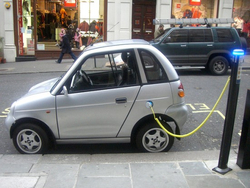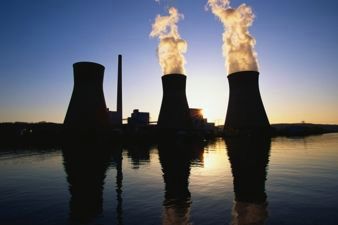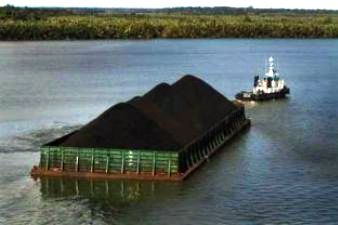
Austria, Germany and Belgium recycled the largest proportion of municipal waste in Europe in 2010. Although some countries have rapidly increased recycling rates, Europe is still wasting vast quantities of valuable resources by sending them to landfill, and many countries risk falling short of legally binding recycling targets.
Overall 35% of municipal waste was recycled in Europe in 2010, a significant improvement on 23% in 2001. But many countries will find it extremely difficult to meet EU-mandated targets to recycle 50% of household and similar waste by 2020.
The information comes from a new report from the European Environment Agency (EEA), which looks at the management of municipal solid waste, mainly consisting of household waste, in 27 EU Member States, Croatia, Iceland, Norway, Switzerland, and Turkey.
Although five countries have already achieved the target, most others will need to make extraordinary efforts to achieve this before the deadline. For example, at present, Bulgaria and Romania seem to recycle small proportions of municipal waste, so in order to meet the target by 2020, they must increase recycling by more than 4 percentage points per year during this decade – something which no country managed to do between 2001 and 2010.
The United Kingdom increased the share of municipal waste recycling from 12 to 39% between 2001 and 2010, while Ireland raised recycling rates from 11 to 36% over the same period. Slovenia, Poland and Hungary have also dramatically improved recycling rates since joining the EU.
Recycling rates are highest in Austria, with 63%, followed by Germany (62%), Belgium (58%), the Netherlands (51%) and Switzerland (51%). Alongside the main report, the EEA has also published individual country reports.
Jacqueline McGlade, EEA Executive Director, said, “In a relatively short time, some countries have successfully encouraged a culture of recycling, with infrastructure, incentives and public awareness campaigns. But others are still lagging behind, wasting huge volumes of resources. The current intense demand for some materials should alert countries to the clear economic opportunities in recycling.”
The EEA report is particularly relevant, given that municipal waste is primarily a public sector responsibility and the current economic situation in many EU Member States demands an added focus on how to achieve policy goals most cost-effectively.
The report supports European Commission efforts to help EU Member States improve their waste management performance. The document was launched on March 19 at a seminar in Brussels on policy instruments and infrastructure to improve municipal waste management.
Other Findings
- Europe is successfully moving up the ‘waste management hierarchy’, albeit more slowly than required by legislation, the report says. The amount of waste sent to landfill has decreased since 2001, while Europe has increased the amount of waste incinerated, composted and recycled.
- Recycling can reduce greenhouse gases and save valuable resources. This is because recycled materials replace virgin materials. From a life-cycle perspective, changing municipal waste treatment between 2001 and 2010 has successfully cut greenhouse gas emissions from municipal waste by 56%, or 38 million tonnes of CO2-equivalent in the EU, Norway and Switzerland, the report says.
- Preventing waste in the first place is the first priority of EU waste legislation. The municipal waste generated by each EU citizen fell by 3.6% between 2001 and 2010. However, this may be due to the economic downturn – waste generation per capita was quite stable between 2001 and 2007.
- Municipal waste produced by the average Slovakian increased by 39% between 2001 and 2010, while Norwegians and Croatians increased annual municipal waste by 30 and 25% respectively. At the other end of the scale, several countries reduced the amount of waste they generated – including Bulgaria (18% reduction), Estonia (17%), Slovenia (12%) and the UK (12%).
- Norway, Ireland and Poland reduced the proportion of municipal waste going to landfill most between 2001 and 2010.
- Improved recycling rates are primarily due to trends in recycling of materials, with less progress in bio-waste recycling.
- Countries that successfully reduced waste sent to landfill and increased recycling usually used a range of national and regional instruments. These included landfill bans on biodegradable waste or municipal waste that has not been pre-treated, mandatory separate collection of municipal waste fractions, economic instruments such as landfill and incineration taxes, and waste collection fees incentivising recycling.
Background
Recycling includes material recycling (for example, glass, paper, metals and plastics) and composting. The 50% recycling target applies to EU Member States, Norway and Iceland. Countries can choose between four different calculation methods to report compliance with this target. The EEA has chosen one method for its analysis, so it should be noted that other methods might result in different outcomes.
In addition, it should be noted that the actual recycling rates in a few countries may be higher than reported data indicate because their current reporting excludes recycled packaging waste from households. Moreover, countries with very low recycling levels can ask for a derogation period for the target.
On 4 March 2013, Eurostat published 2011 municipal waste data, offering further options for analysis. Eurostat uses slightly different categories from the EEA and data are thus not directly comparable with EEA analysis.
Source: EEA.


















